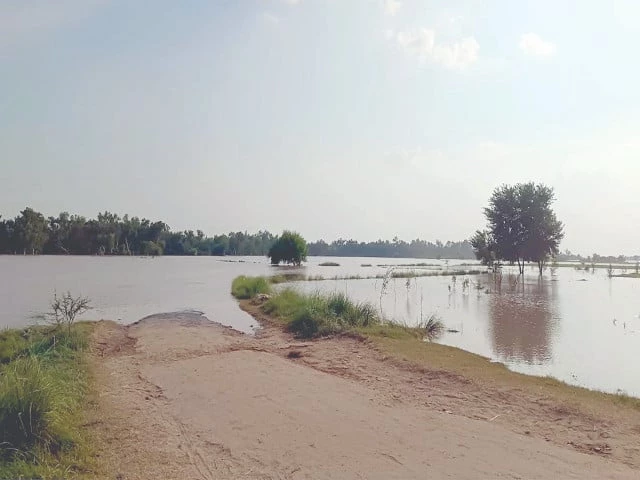Islamabad / Lahore:
The National Disaster Management Authority (NDMA), in coordination with the provincial Punjab Disaster Management Authority (PDMA), launched precautionary evacuation efforts for communities along the Sutlej river following a high increase in water levels.
According to the National Emergency Operations Center, the Harike discharge increased to 122,890 Cuses early Friday morning. The water flow continues to increase to Ganda Singh Wala and should reach 120,000 Cusecases, while at the Suleimanki head, it could approach 100,000 bows.
A new monsoon system is expected to enter the higher regions of the country from the Oman Sea and Bengal Bay from Saturday evening, followed by a wave to the west from August 23. The eighth fate of the monsoon should bring strong precipitation to the upper areas of the Sutlej river, increasing the risk of flooding.
Officials said the water levels in the Sutlej should increase sharply in the next 24 hours due to heavy monsoon rain and water releases from the Indian tanks.
The Division of Flood Forecast (FFD) Lahore indicated that the River Indus in Guddu is likely to experience high floods, while Sukkur should see average flood levels.
Sutlej to Ganda Singh Wala is expected to transport 70,000 to 80,000 brackets, classified as an average flood, while the Taunsa dam can also cope with average flood conditions.
Nationally, the National Disaster Management Authority (NDMA) reported until June 26 to August 21, incidents linked to the monsoon cost 771 people and left 993 people injured. The Punjab recorded 165 deaths and 584 injuries, Khyber-Pakhtunkhwa 465 deaths and 279 injuries, Sindh 42 deaths, Azad Cashmire 23, Gilgit-Baltistan 45 and Islamabad eight.
More than 4,700 houses have been damaged or destroyed, 661 kilometers of roads and 234 bridges were affected, while more than 5,400 cattle have perished. In the past 24 hours only, 24 deaths, 15 injuries, 345 damaged houses and 380 livestock loss were reported, mainly in the Biner, Swat and Swat districts of Khyber-Pakhtunkhwa due to sudden floods and landslides.
Rescue operations are underway, 482 rescue camps created nationally, housing more than 29,000 people displaced and providing food and medical aid.




